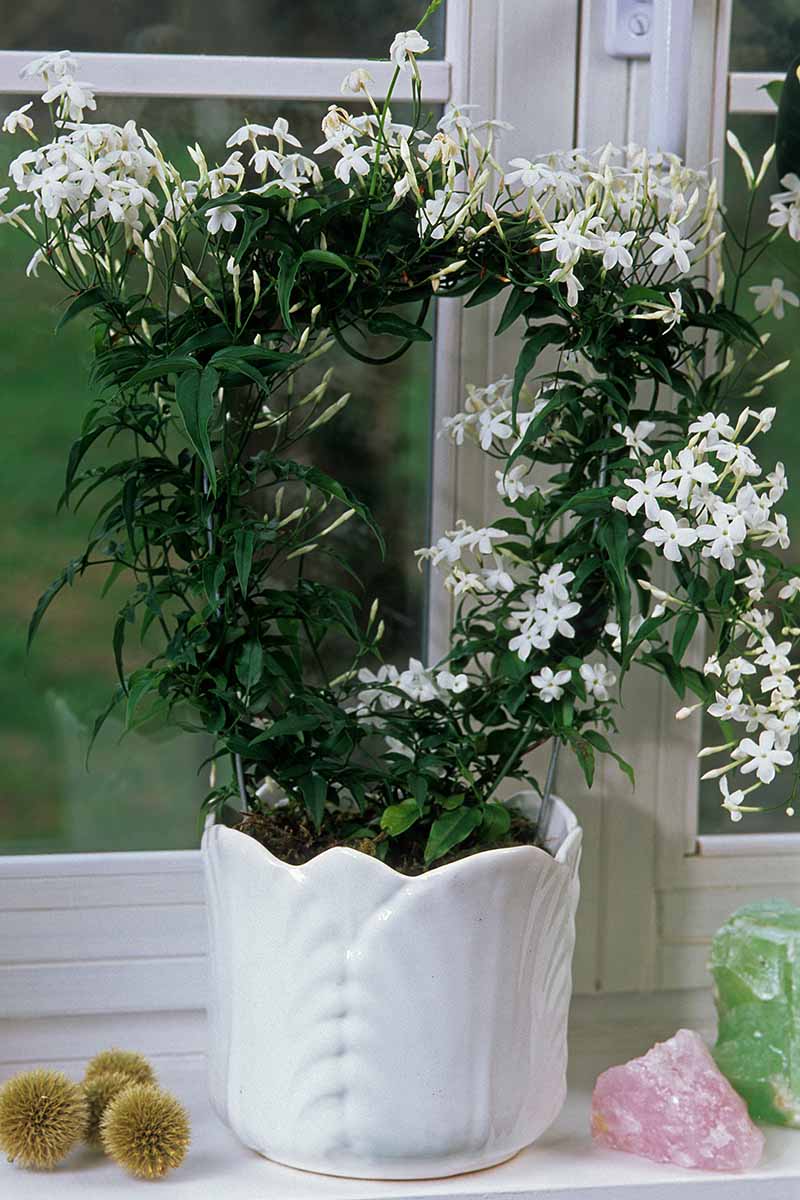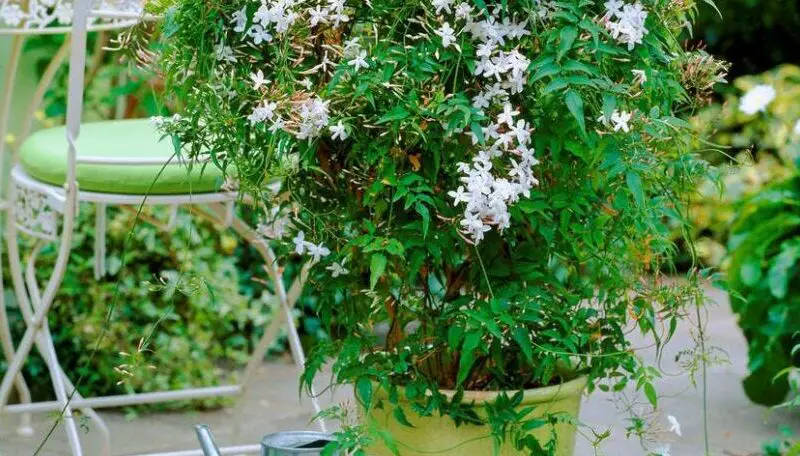Selecting the Right Jasmine Variety for Container Gardening
When it comes to growing jasmine in pots, selecting the right variety is crucial for success. With over 200 species of jasmine, choosing the best one for container gardening can be overwhelming. However, by understanding the unique characteristics, growth habits, and fragrance levels of different jasmine varieties, you can make an informed decision. Star Jasmine (Trachelospermum jasminoides) is a popular choice for containers due to its compact growth, evergreen foliage, and intense fragrance. Winter Jasmine (Jasminum nudiflorum) is another excellent option, offering a delicate, sweet fragrance and a sprawling habit that can be trained to climb up trellises or walls. Arabian Jasmine (Jasminum sambac) is also a great choice, boasting an intense, sweet fragrance and a compact, bushy growth habit. By considering factors such as growth rate, fragrance level, and pruning requirements, you can choose a jasmine variety that thrives in pots and provides beauty and fragrance to your outdoor space. Remember, learning how to grow jasmine in pots starts with selecting the right variety, and with these options, you’ll be well on your way to cultivating fragrant beauty in your containers.
Choosing the Perfect Pot and Soil for Jasmine
When it comes to growing jasmine in pots, selecting the right pot and soil is crucial for optimal growth and fragrance. The ideal pot size for jasmine plants depends on the variety, but a general rule of thumb is to choose a pot that is at least 6-8 inches deep and 8-10 inches wide. This will provide enough room for the roots to grow and support the plant’s mature size. In terms of material, ceramic or terra cotta pots are excellent choices as they allow for good drainage and aeration. Avoid using plastic pots as they can retain too much water and cause root rot. Good drainage is essential for jasmine plants, so make sure the pot has drainage holes in the bottom to prevent waterlogged soil. A well-draining potting mix is also crucial, and a mix specifically designed for flowering plants or herbs is a good choice. Avoid using regular garden soil as it can be too dense and may cause waterlogging. By choosing the right pot and soil, you’ll be well on your way to learning how to grow jasmine in pots and enjoying the beauty and fragrance of these lovely plants.
How to Plant Jasmine in a Pot: A Step-by-Step Guide
Planting jasmine in a pot is a straightforward process that requires some care and attention to detail. By following these steps, you’ll be well on your way to learning how to grow jasmine in pots and enjoying the beauty and fragrance of these lovely plants. First, choose a healthy jasmine plant with a well-developed root system and plenty of foliage. Next, prepare the pot by filling it with a well-draining potting mix, leaving about an inch at the top for watering. Gently remove the jasmine plant from its container, taking care not to disturb the roots. If the roots are circling or tangled, gently tease them apart with your fingers or a blunt instrument. Place the jasmine plant in the pot, making sure the soil level is the same as it was in the original container. Add or remove soil as needed, and gently firm the soil around the roots. Water the plant thoroughly to settle the soil, and add any support structures, such as trellises or stakes, to help the plant grow upright. Finally, place the pot in a location with bright, indirect light and maintain a consistent watering schedule. By following these steps, you’ll be able to enjoy the beauty and fragrance of jasmine in pots for years to come.
Lighting and Temperature Requirements for Jasmine in Pots
Jasmine plants in pots require specific lighting and temperature conditions to thrive. When it comes to lighting, jasmine plants prefer bright, indirect light, but not direct sunlight, which can cause scorching. East- or west-facing windows are ideal, as they provide gentle, indirect light. Aim for at least 4-6 hours of indirect sunlight per day. In terms of temperature, jasmine plants prefer daytime temperatures between 65-75°F (18-24°C) and nighttime temperatures around 55-65°F (13-18°C). Avoid placing jasmine plants in pots near heating or cooling vents, fireplaces, or drafty windows, as this can cause temperature fluctuations. Humidity is also important, with jasmine plants preferring a humid environment with a relative humidity of 40-60%. To maintain the right humidity, you can place the pot on a tray filled with water and pebbles or use a humidifier nearby. By providing the right lighting and temperature conditions, you’ll be well on your way to learning how to grow jasmine in pots and enjoying the beauty and fragrance of these lovely plants.
Watering and Fertilizing Jasmine in Containers
Proper watering and fertilization are crucial for the health and growth of jasmine plants in pots. When it comes to watering, jasmine plants prefer moist soil, but not waterlogged. Check the soil daily, and water only when the top inch of soil feels dry to the touch. Water thoroughly, making sure the pot drains well to prevent root rot. Avoid getting water on the leaves or flowers to prevent fungal diseases. In terms of fertilization, jasmine plants in pots benefit from regular feeding. Use a balanced, water-soluble fertilizer (20-20-20) at half the recommended strength. Fertilize every 2-3 weeks during the growing season (spring and summer) and once a month during the dormant season (fall and winter). You can also use a fertilizer specifically formulated for flowering plants, as it will promote blooming and fragrance. By following these watering and fertilization tips, you’ll be well on your way to learning how to grow jasmine in pots and enjoying the beauty and fragrance of these lovely plants.
Pruning and Training Jasmine in Pots for Optimal Growth
Pruning and training are essential for promoting healthy growth, encouraging blooming, and maintaining the shape of jasmine plants in pots. Prune jasmine plants regularly to remove dead, damaged, or diseased branches, as well as to encourage new growth and promote a bushy shape. Use clean, sharp pruning tools to prevent spreading diseases, and make cuts just above a leaf node. Remove any weak or spindly growth, and thin out the plant to allow air and light to reach the inner branches. Training jasmine plants in pots involves providing support for the climbing stems. Use a trellis or obelisk to provide structure, and gently tie the stems to the support using soft twine or wire. This will help the plant grow upright and promote blooming. Regular pruning and training will also help control the plant’s size and shape, making it ideal for growing jasmine in pots. By following these pruning and training tips, you’ll be able to enjoy a thriving and fragrant jasmine plant in your container garden, and learn how to grow jasmine in pots with ease.
Pest and Disease Management for Jasmine in Containers
When learning how to grow jasmine in pots, it’s essential to be aware of common pests and diseases that can affect these plants. Jasmine plants in pots are susceptible to pests like spider mites, mealybugs, and scale, which can cause damage to the leaves and stems. Regularly inspect the plant for signs of infestation, such as tiny eggs, white powdery residue, or actual pests on the leaves. To prevent infestations, maintain good air circulation, water carefully, and avoid overfertilizing. For organic treatment, use neem oil or insecticidal soap to control pest populations. Jasmine plants in pots are also prone to diseases like root rot, leaf spot, and powdery mildew, often caused by overwatering, poor air circulation, or high humidity. To prevent diseases, ensure good drainage, avoid getting water on the leaves, and provide adequate air circulation. If disease occurs, treat with a fungicide specifically designed for ornamental plants. By being proactive and taking preventative measures, you can minimize the risk of pest and disease issues and enjoy a healthy, thriving jasmine plant in your container garden.
Tips for Encouraging Jasmine to Bloom in Pots
To encourage jasmine plants in pots to bloom, it’s essential to provide the right conditions for optimal growth. One of the most critical factors is promoting root growth, which can be achieved by using a well-draining potting mix and a pot that is at least 6-8 inches deep. This will give the roots enough room to grow and support the plant’s overall development. Providing support for the climbing stems is also crucial, as jasmine plants in pots can become top-heavy and prone to damage. Use a trellis or obelisk to provide structure and gently tie the stems to the support using soft twine or wire. Creating a conducive environment is also vital, which includes providing the right amount of direct sunlight, temperature, and humidity. Jasmine plants in pots require at least 4-6 hours of direct sunlight per day, temperatures between 65-75°F (18-24°C), and a humid environment with a relative humidity of 50-60%. By following these tips and learning how to grow jasmine in pots, you can encourage your jasmine plant to bloom profusely and enjoy its beautiful, fragrant flowers. Additionally, fertilize your jasmine plant regularly with a balanced fertilizer, and prune it regularly to promote healthy growth and encourage blooming. With the right care and attention, your jasmine plant in a pot can thrive and provide you with a beautiful display of fragrant flowers.








